Know Punjab
Punjab is a state in northwest region of India and is one of the most prosperous states.
The name Punjab is made of two words Punj (Five) + Aab (Water) i.e. land of five rivers. These five rivers of Punjab are Sutlej, Beas, Ravi, Chenab, and Jhelum. Only Sutlej, Ravi and Beas rivers flow in today’s Punjab. The other two rivers are now in the state of Punjab, situated in Pakistan. The Punjab State is divided into three regions: Majha, Doaba and Malwa.
Agriculture is the mainstay of Punjab’s economy. Other major industries include manufacturing of scientific instruments, electrical goods, financial services, machine tools, textiles, sewing machines etc..
Punjab has made considerable economic progress after Independence despite the setback it suffered in 1947. It contributes nearly two thirds to the total production of food grains and a third of milk production in the country. It is the leading producer of wheat, thereby contributing to the national food security. The initiative of Green revolution (a major agricultural initiative) has been keenly taken forward by the people of Punjab. Even though Punjabis account for less than 2.5% of the Indian population, they are one of the most prosperous races in India. Their per capita income is twice the national average.
Punjab is considered to have the best infrastructure in India; this includes road, rail, air and river transport links that are extensive throughout the region. Punjab also has the lowest poverty rate in India and has won the best state performance award, based on statistical data compiled by the Indian Government.
According to 2011 Census of India, the total Population of Punjab is 2,77,43,338. The decadal change i.e. increase in population from 2001 to 2011 is 13.89%.
Geographical area
The total area of the state is 50,362 square kilometers (19,445 square miles), with the cultivable area being under assured irrigation. Its average elevation is 300 meters (980 ft) above sea level, with a range from 180 meters (590 ft) in the southwest to more than 500 meters (1,600 ft) around the northeast border.
Location
Punjab extends from the latitudes 29.30° North to 32.32° North and longitudes 73.55° East to 76.50° East.
Punjab is bounded on the west by Pakistan, on the north by Jammu and Kashmir, on the northeast by Himachal Pradesh and on the south by Haryana and Rajasthan.
Climate
The state has a balanced amalgamation of heat in summer, rain in monsoon and cold in winter. The three seasons are so distinctly distributed that you can enjoy each of them individually. Punjab experiences both summer and winter to its extreme. It even receives abundant rainfall, which makes the state a very fertile land. The region lying near the foot hills of Himalayas receive heavy rainfall whereas the region lying at a distant from the hills, the rainfall is scanty and the temperature is high.
The summer months span from mid April to the end of June. The rainy season in Punjab is from early July to end of September. October marks the beginning of the winter season. From December onwards, the winter becomes chilly. Most of the major festivals of Punjab, like Lohri, Holla Mohalla, Diwali, and Dussehra, fall during this period. The best time to visit Punjab is from October to the end of March.
Language
Punjabi, the official language of the state, is the tenth most widely spoken language in the world. It is also the fourth most spoken language in Asia. It is the only living language among the Indo-European languages which is a fully tonal language. Punjabi is written in the Gurmukhi Script. Besides Punjabi, Hindi, Urdu and the universally acclaimed English are the languages that are spoken in Punjab.
State Capital
Chandigarh is a union territory and serves as the capital of the states of Punjab and Haryana. It is one of the early planned cities in the post-independence India. Picturesquely located at the foothills of Shivaliks, it is known as one of the best experiments in urban planning and modern architecture in the twentieth century in India. The dream city of India’s first Prime Minister, Sh. Jawahar Lal Nehru, Chandigarh was planned by the famous French architect Le Corbusier.
The foundation stone of the city was laid in 1952. In March, 1948, the Government of Punjab, in consultation with the Government of India, approved the area of the foothills of the Shivaliks as the site for the new capital. The location of the city site was a part of the erstwhile Ambala district as per the 1892-93 gazetteer of District Ambala. Subsequently, at the time of reorganization of the state on 01.11.1966 into Punjab, Haryana and Himachal Pardesh, the city assumed the unique distinction of being the capital city of both, Punjab and Haryana while it itself was declared as a Union Territory and under the direct control of the Central Government.
Cities/ Towns
There are 23 Districts and total of 168 statutory towns and 69 census towns in Punjab. Thus there are total 237 towns (or say cities) in Punjab. Major cities of Punjab include Mohali, Ludhiana, Amritsar, Patiala and Jalandhar.
One of the world’s first and oldest civilizations, the Indus Valley Civilization spanned much of the Punjab region, with cities such as Harappa and Mohenjodaro now located in the modern-day Pakistani province of Punjab.





